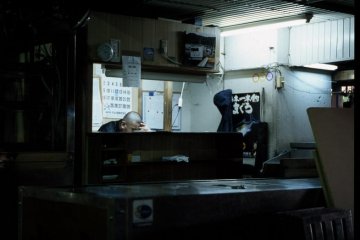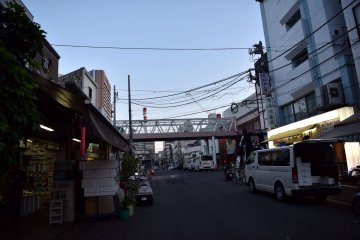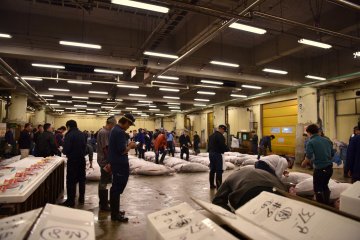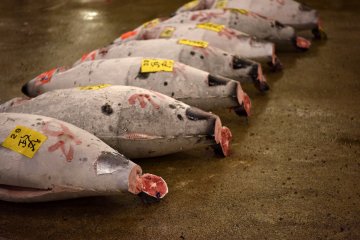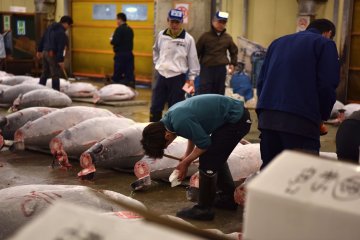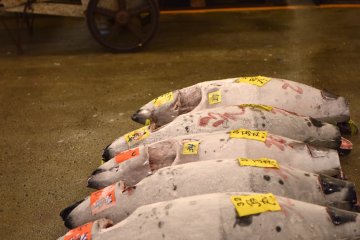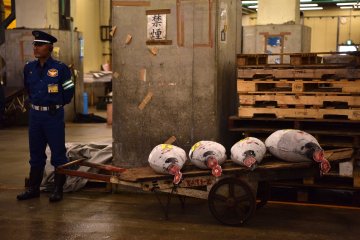Here is a pretty standard thought process for when many people think of Japan: Japan — sushi — fish, fish, fish — massive tuna torpedoes laying in a Tsukiji Market warehouse.
Although you might not have heard of Tsukiji Market, you have probably seen photos or videos of Japan’s most iconic wholesale market located in none other than the nation’s capital, Tokyo. Tsukiji Market as a whole is certainly a sight to behold and experience, with countless vendors selling various types of seafood, fruits, vegetables, and other edibles. But what attracts the world’s attention is the tuna auction held in a private warehouse at 5:00am, five days a week.
120 visitors are permitted to enter and witness the auction each morning. The first 60 visitors to reserve their places at Kachidoki Gate enter from 5:25-5:50am, and the second 60 enter from 5:50-6:15am. Admission to the auction is free, and the only price to pay? An early rise and at least a two and a half hour wait. Each visitor is given either a yellow or green fluorescent vest, which indicates the visiting time slot. After receiving the vest and securing a reservation, visitors are free to wander through the outer market.
While wandering, though, please do not misplace your vest! Put it in your bag, give it to someone more responsible, or just wear it; it does not matter if you look like a gumdrop, nobody is awake to judge you. If you do not have a vest, you will not see the tuna auction, and you either stayed up all night or woke up too early for a missed opportunity.
I made two attempts at catching a glimpse of the Tsukiji tuna auction. For the first attempt I arrived at 4:15am, but was told reservations were full at 3:30am. So I performed my walk of shame, taking a few photos, which can be identified by the bright morning sky that signifies my belatedness.
Fortunately, I did not have to make three attempts for the charm to work. I arrived at 3:05am the next morning, and despite being disciplined by a security guard for accidentally jaywalking out of desperation, I made it as visitor #101. Exactly what time visitor #1 walked in I have no idea, but I have utmost respect for that individual. I was handed a green vest and the market’s map with visitor guidelines to review, and then ushered into a room packed full of visitors.
When we finally entered the auction area, silence overcame us. Rows and rows of tuna the size of seals lay on the ground, their fins removed and frozen to the bone. Buyers stepped among the fish, crouching occasionally to inspect the specimen’s tail meat. The whiter the meat, the better because the fish has more fat.
A bell sounds and the auction begins. Sellers elevate themselves on platforms, shouting and bouncing while buyers quietly bid for quality tuna using hand signals. In a matter of minutes, the auction is over. Company names are painted in red onto each sold item, and the tuna are hauled away on carts.
The sheer size of the tuna combined with the methodic efficiency of the auction were spectacles to behold. It was definitely worth sacrificing a little bit of sleep to experience such an event!





